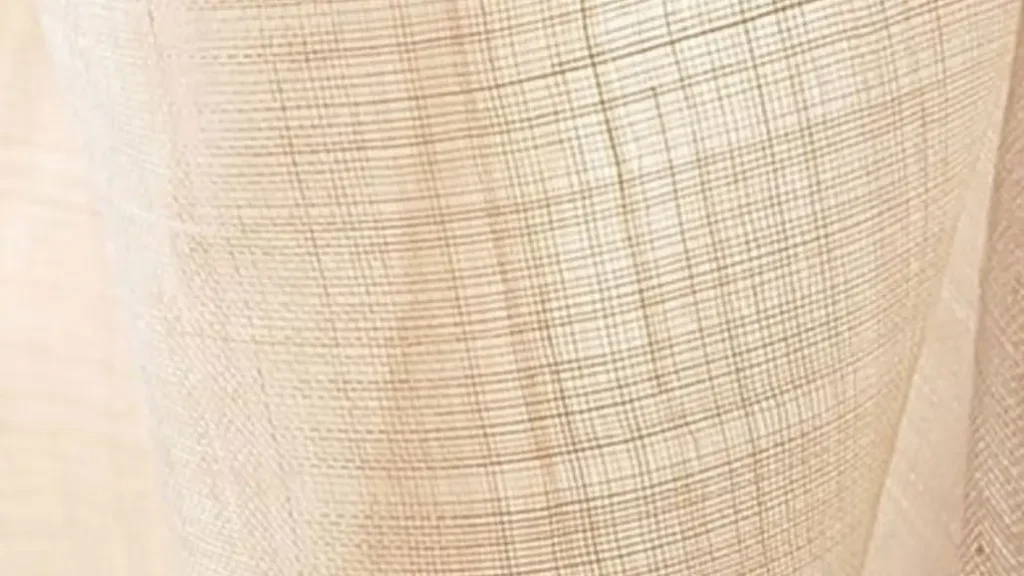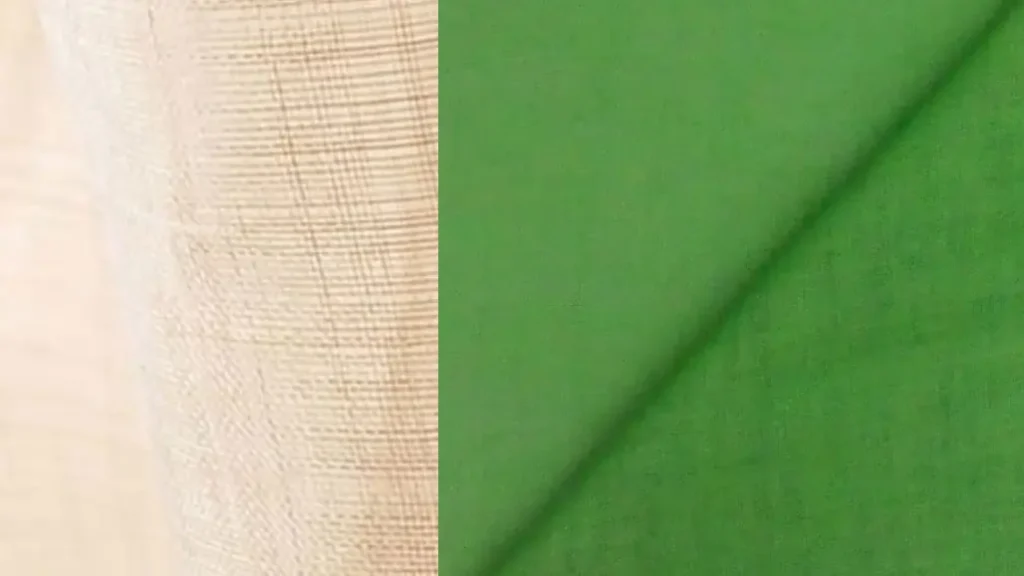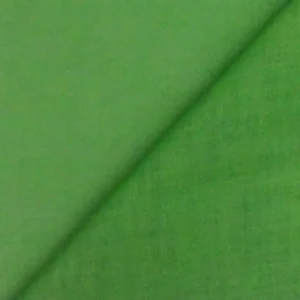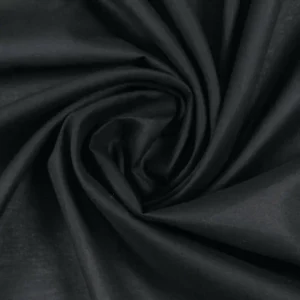Cambric and lawn are both lightweight, plain-weave fabrics often used for warm-weather clothing. While they share some similarities, there are key differences that make them suitable for different purposes. This blog post will delve into the distinctions between cambric and lawn fabrics, exploring their properties, uses, and care requirements.
Understanding the unique characteristics of each fabric will help you make informed decisions when choosing materials for your sewing projects or purchasing ready-made garments. Whether you prioritize breathability, durability, or a specific drape, this guide will equip you with the knowledge to select the perfect fabric for your needs.
What Is Cambric Fabric

Cambric is a lightweight, plain-weave fabric that was originally made from linen but is now commonly made from cotton. It’s known for its smooth surface and crisp feel, making it a popular choice for a variety of uses.
One of the key characteristics of cambric is its tight weave, which gives it a slightly crisp texture and makes it more durable than some other lightweight fabrics. This tight weave also contributes to its smooth surface, making it comfortable to wear.
Cambric is a versatile fabric that can be used for a wide range of applications, including clothing (such as shirts, blouses, and dresses), household linens (like handkerchiefs and napkins), and even as a base for embroidery and lacework. Its lightweight nature and smooth finish make it a good choice for items that will be worn close to the skin.
What Is Lawn Fabric
Lawn fabric is a lightweight, plain-weave fabric that is typically made from cotton. It’s known for its fine texture, semi-sheer appearance, and breathability, making it a popular choice for warm-weather clothing.
One of the key characteristics of lawn fabric is its high thread count, which contributes to its smooth, almost silky feel. This tight weave also gives it a slight crispness, although it’s not as stiff as cambric.
Lawn fabric is a versatile material that’s often used for making dresses, blouses, skirts, and even lightweight shirts. Its breathability makes it particularly suitable for summer garments. It can also be used for other applications like handkerchiefs, linings, and even home decor items.
Cambric Fabric vs Lawn

Cambric and lawn are both lightweight, plain-weave fabrics that are popular for warm-weather clothing. While they share some similarities, there are key differences that make each fabric suitable for different purposes. Understanding these distinctions will help you choose the right material for your next project.
Cambric Fabric
Cambric is a finely woven cloth with a smooth surface and a slightly crisp feel. It was originally made from linen, but today it is more commonly made from cotton. The tight weave of cambric gives it a degree of durability and makes it less transparent than lawn. It often has a subtle sheen on one side.
Lawn Fabric
Lawn is also a lightweight, plain-weave fabric, typically made from cotton. It is known for its soft, almost silky texture and its breathability. Lawn has a higher thread count than cambric, which contributes to its smooth feel and slightly crisp drape. It is often semi-sheer.
Key Differences
| Feature | Cambric | Lawn |
|---|---|---|
| Fiber | Cotton (originally linen) | Cotton (sometimes linen) |
| Weave | Plain weave, tight | Plain weave, fine |
| Texture | Smooth, slightly crisp | Very smooth, soft |
| Sheerness | Less sheer | More sheer |
| Durability | More durable | Less durable |
| Drape | Crisper | Softer |
| Shine | May have a slight sheen | Generally no shine |
| Uses | Shirts, blouses, dresses, linings, handkerchiefs | Summer dresses, skirts, blouses, baby clothes, handkerchiefs |
Choosing Between Cambric and Lawn
- Durability: If you need a fabric that will withstand wear and tear, cambric is the better choice. Its tighter weave makes it more durable than lawn.
- Breathability: For hot weather, lawn is more breathable due to its higher thread count and slightly looser weave.
- Drape: Cambric has a crisper drape, making it suitable for structured garments. Lawn has a softer drape, ideal for flowing styles.
- Sheerness: If you prefer a less transparent fabric, cambric is the way to go. Lawn is often semi-sheer and may require lining.
Both cambric and lawn are excellent choices for lightweight, comfortable clothing. By understanding their unique properties, you can select the perfect fabric for your next sewing project.
Is Cambric Better Than Lawn?
Neither cambric nor lawn is inherently “better” than the other; they simply have different properties that make them suitable for various purposes. Cambric is more durable and less sheer, making it good for structured garments, while lawn is softer and more breathable, ideal for flowing styles and hot weather. The best choice depends on your specific needs and preferences.
What Fabric is Similar to Cambric?
Poplin is a fabric very similar to cambric. Both are plain-weave, lightweight fabrics, often made of cotton, and share a crisp hand and smooth surface. While poplin may sometimes be slightly heavier, the two are often interchangeable for many sewing projects.
Is Lawn Fabric Expensive?
Lawn fabric’s price can vary depending on factors like fiber content (cotton lawn is common, but linen lawn exists), quality of the weave, and whether it’s printed or solid.
Generally, good quality cotton lawn is a mid-range priced fabric; it’s not considered a luxury fabric like silk, but it’s also not as inexpensive as some basic cottons. Designer or printed lawns can certainly be more expensive.
How Long Does Lawn Fabric Last?
The longevity of lawn fabric depends on several factors, including fiber content, quality of the weave, and how it’s cared for. High-quality cotton lawn, with proper care (gentle washing, avoiding harsh detergents and excessive heat), can last for several years, though it may not be as durable as heavier fabrics. Lower quality lawn, or lawn that is frequently exposed to wear and tear, might show signs of wear sooner.
Conclusion
Cambric and lawn fabrics each have unique qualities that make them suitable for different projects. Cambric is known for its durability and crispness, while lawn is prized for its softness and breathability. The best choice depends on the specific needs of your project.
Cambric is a good choice for projects that need a durable and crisp fabric, such as shirts, blouses, and dresses. Lawn is a good choice for projects that need a soft and breathable fabric, such as summer dresses, skirts, and baby clothes.
If you’re looking for high-quality wholesale lawn fabric, consider sourcing from Fanda Fabrics. They offer a wide selection of lawn fabrics at competitive prices.


